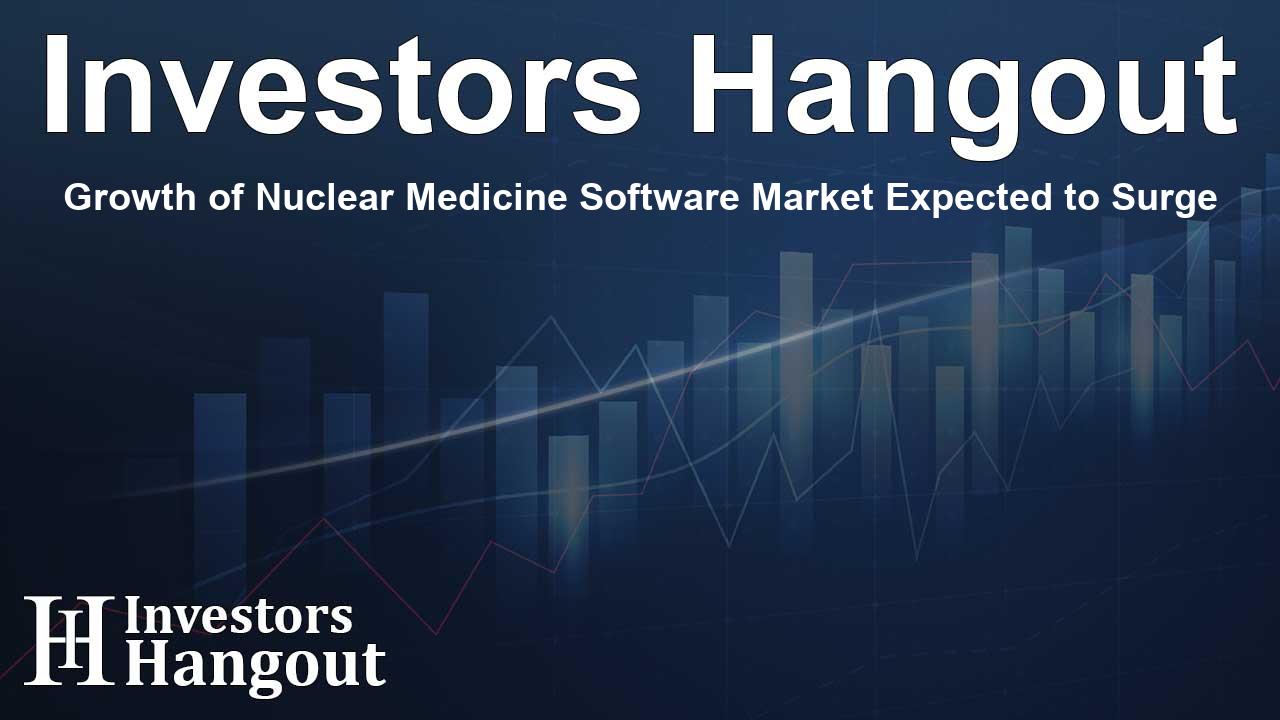Growth of Nuclear Medicine Software Market Expected to Surge

Emerging Trends in the Nuclear Medicine Software Market
The nuclear medicine software market is poised for significant growth, projected to reach approximately US$1,491.55 million by 2030. This represents a compound annual growth rate (CAGR) of 9.0% from its current valuation. As healthcare continues to evolve, the demand for precise and early diagnostics is paramount, fueling advancements in nuclear medicine software.
Drivers of Market Growth
Key factors driving this expansion include rising chronic disease incidence, particularly in cancer, cardiovascular, and neurological conditions. The ability of nuclear medicine software to aid in early disease detection is critical, as it allows for better treatment planning. With the increasing focus on personalized medicine, healthcare providers are increasingly adopting these solutions to tailor treatments based on detailed imaging and patient history.
The Role of Automation and AI
Automation tools are revolutionizing nuclear medicine processes. The integration of automated dosimetry tools not only enhances safety but also improves treatment precision. These tools simplify complex radiation planning processes and significantly reduce the chances of errors. Regulatory authorities are working proactively to enhance oversight frameworks, ensuring this software is deployed safely and effectively by healthcare providers.
Innovations in Imaging Technologies
This market is witnessing groundbreaking innovations in imaging technologies, including advancements in artificial intelligence (AI) integration. AI is making it possible for software to perform complex functions such as image reconstruction, data analysis, and dosimetry. These improvements mean that healthcare providers can achieve greater accuracy in diagnostics and enhanced workflow coordination.
Market Segmentation Insights
Analyzing the nuclear medicine software market by application reveals vital insights. The diagnostics segment dominates, accounting for a significant share of the market. This success is largely due to the widespread implementation of PET and SPECT imaging technologies in disciplines such as oncology, cardiology, and neurology. Additionally, the growing awareness of patients regarding the importance of early diagnosis plays a crucial role in the expansion of this segment.
End-User Demand for Nuclear Medicine Software
In terms of end-users, pharmaceutical and biotechnology companies hold the largest market share. These companies utilize nuclear medicine software for various purposes, including clinical trials for imaging and personalized dosimetry. The need for precise and reliable software in clinical trial imaging underscores the increasing alignment of nuclear medicine with advancements in drug development and personalized treatment protocols.
Regional Market Dynamics
Geographically, the nuclear medicine software market is largely driven by advancements in North America. The region benefits from advanced healthcare infrastructure, high adoption rates of imaging technologies, and strong regulatory frameworks. Significant investments in AI-driven platforms further position North America as a leader in this market sector. The collaborative efforts among healthcare institutions, academic centers, and leading pharma companies play a critical role in enhancing the market's prospects.
Future Directions in Nuclear Medicine
The growth trajectory of the nuclear medicine software market is underpinned by two pivotal strategies: leveraging AI to refine existing solutions and fostering partnerships to streamline clinical processes. The rise of theranostics—the convergence of therapy and diagnostics using targeted radiopharmaceuticals—is redefining the landscape of nuclear medicine software. As patient care becomes increasingly individualized, the role of software in this domain continues to expand.
Business Innovations and Collaborations
Companies within the sector are adopting innovative approaches to improve diagnostic accuracy and operational efficiency through AI/ML capabilities. For instance, industry leaders are collaborating to broaden access to advanced imaging technologies. Initiatives like these reflect a commitment to providing comprehensive patient care while enhancing infrastructure in nuclear medicine.
Frequently Asked Questions
What is the projected growth rate of the nuclear medicine software market?
The nuclear medicine software market is expected to exhibit a CAGR of 9.0%, reaching approximately US$1,491.55 million by 2030.
What are the main drivers for growth in this market?
Key drivers include an increasing prevalence of chronic diseases, the demand for personalized medicine, and improvements in diagnostic technologies.
How does AI integrate with nuclear medicine software?
AI enhances functionalities such as image reconstruction, data analytics, and dosimetry, leading to improved diagnostic accuracy and workflow efficiency.
Which regions are driving market growth?
North America is leading the market due to its advanced healthcare infrastructure and high adoption rates of imaging technologies.
What future innovations can we expect in nuclear medicine?
Expect ongoing advancements in AI applications, enhanced collaboration between stakeholders, and increased focus on theranostics to transform patient care in nuclear medicine.
About The Author
Contact Dominic Sanders privately here. Or send an email with ATTN: Dominic Sanders as the subject to contact@investorshangout.com.
About Investors Hangout
Investors Hangout is a leading online stock forum for financial discussion and learning, offering a wide range of free tools and resources. It draws in traders of all levels, who exchange market knowledge, investigate trading tactics, and keep an eye on industry developments in real time. Featuring financial articles, stock message boards, quotes, charts, company profiles, and live news updates. Through cooperative learning and a wealth of informational resources, it helps users from novices creating their first portfolios to experts honing their techniques. Join Investors Hangout today: https://investorshangout.com/
The content of this article is based on factual, publicly available information and does not represent legal, financial, or investment advice. Investors Hangout does not offer financial advice, and the author is not a licensed financial advisor. Consult a qualified advisor before making any financial or investment decisions based on this article. This article should not be considered advice to purchase, sell, or hold any securities or other investments. If any of the material provided here is inaccurate, please contact us for corrections.
